India`s north-east is a fascinating geo-political entity in the country`s internal context. The developments in the region, or rather the sub-region, has continued to have ramifications since the first decade of India`s nationhood, both internally and in its south and south-eastern periphery. An interesting aspect is that each of the components of the region i.e., the North-Eastern States, have different attributes, politically and economically, as well as from the development and security perspectives. While the region has a predominant mongoloid ethnicity, the North-Eastern State of Tripura (Twipra in local Kokborok dialect, meaning `land by the water`), has been a melting pot of indigenous ethnic-tribal cultural collective of Tibeto-Burman stock – the Tiprasa, and of Bengali aspirations, traditions and way of life imbibed particularly from the migrants or settlers from the eastern districts of erstwhile East Bengal, now Bangladesh.
It may be worthwhile to appraise how the different strands coalesced into a mix of cultures and inescapably impinged on socio-economic development, political consolidation, economic growth and internal security milieu of Tripura. In a sense, Tripura is mini replica of West Bengal, but in many respects it is also substantially different. Tripura, at the government level and in its inhabitants’ psyche, has not been generally acknowledged as a `mini` West Bengal or even its sister state. This has been the outlook even when the Indian National Congress (INC) was in power in both the states. Same has been the situation after the Communists came to govern both the states, notwithstanding fraternalisation between the Communist Party of India (Marxist) (CPI-M) units of and West Bengal Tripura, and their leaders.
The state of administration, political processes and developments, economy and the security environment of the two provinces i.e. of West Bengal and Tripura, have been quite dissimilar. Tripura has been trying to evolve from its princely state antecedents and under-developed past to a province within the Indian Union yearning for development, and ethno-cultural and political stability, in harmonious juxtaposition with its neighbouring North-Eastern States. Being land-locked and at a distant South-East corner of the region have been the constraints for Tripura. Not that the different state governments of Tripura or union governments were oblivious to these impediments, but the geopolitical milieu around the North-East and the post-independence growth deficit have compounded the constraints. The unfortunate tribal uprising in the 1980’s and the Mandwai massacre in June 1980, when the ethnic tribals slaughtered a large number of Bengalis, were the outcome of politico-economic contestations between different segments of the State’s population; it was also indicative of successive State Administration`s inability to respond to the demand of its indigenous people for land rights, protection of their forest resource-base livelihood and culture. Notwithstanding a politically cohesive and livelihood issues-based approach of CPI-M governments of the past two decades - to the extent of broadly accommodating indigenous tribal interests harmoniously with those of the settler Bengalis - some underlying tension has remained in the socio-political realm of the State.
The State has been unique to the extent that it gave substantive political space to the indigenous tribals through the medium of the Tripura Tribal Areas Autonomous District Council (TTAADC), headquartered at Khumulwng in the West district. The TTAADC was constituted through an enactment of India`s Parliament, included in the Sixth Schedule of the Constitution, and made effective from 1st April, 1985. The TTAADC encompasses more than two-thirds of the State, with only a few fringe border areas in South-West Tripura outside its territorial ambit. This implies that, nearly the whole of Tripura has a dualism in its administrative structure and disposition. Though functional areas of governance and sanctioning powers are well demarcated between the State Government and the TTAADC, most of Tripura is administered vis-à-vis their respective domains by two entities, i.e. the State Secretariat at Agartala and the TTAADC. 15 departments, including management of land other than of government, forests, water resources, public health, school-level academic institutions, and some more, are under the control of TTAADC, with nearly 15 lakh people served by this autonomous body. It has revenue raising powers of taxing goods, animals, vehicles, boats and professional earnings to mobilise funds for executing programmatic functions pertaining to the areas devolved to it. The State Government also shares a part of its revenue with the TTAADC, apropos central and state finance commissions’ recommendations. The institutional arrangements cited above have been quite farsighted and has stood the test of more than three decades of governance.
However, a devolutionary arrangement like the TTAADC would not have succeeded had not the bilateral relations between India and Bangladesh been conducive. The problem of insurgency, which arose consequent on alienation of the indigenous tribal people, was aggravated because of the sanctuary provided by Bangladesh governments to the armed cadres of the local insurgent outfits, viz. the National Liberation Front of Tripura (NLFT) and All Tripura Tiger Force (ATFF), and their leaders. These outfits spearheaded the insurgency and espoused the indigenous peoples’ cause, infiltrated into Tripura from across an Tripura-Bangladesh Border traversing riverine terrain, agricultural tracts and forests, and virtually unfenced till the border fencing programme was taken up seriously in the 1990’s. The fact that the border guarding forces of India and Bangladesh were not in really friendly disposition, particularly during the regime of Sheikh Khaleda Zia and her Bangladesh Nationalist Party, aggravated the internal security situation in Tripura.
Consequent on the Awami League Government coming to power in Bangladesh in 2009, there was substantial improvement in bilateral relations between the two countries. Dhaka took decisive action to close down the hideouts of the NLFT and ATTF insurgents in Bangladesh and deport some of their leaders to India, leading to stability in border management and the security scenario in Tripura. Enhancement of professional prowess of the State’s police personnel and effectiveness of administration, with a conjoint approach by the Union and State Governments, notwithstanding that they were of different political orientation, facilitated this positive change. This is borne out by the National Crime Records Bureau data of the recent years (post-2016) which indicate less than 5000 cases of reported cognizable offences for a population of approximately 40 lakh.
The issues which presently require attention or intervention are : (a) political adjustment or understanding on the enhancement of powers and functional capacity of the TTADC; (b) further strengthening of the State’s rights-based economic delivery systems; and, (c) greater institutionalised development along the India-Tripura frontier areas in terms of sustainable growth, welfare and security. The salience of these issues are highlighted in the backdrop of the recent demand for full statehood encompassing the existing TTAADC area - notwithstanding the demand being politically inspired and projected on narrow ethnic considerations - for integrated development of the State and obviating sectarian tension. Among the North-Eastern States, Tripura has been performing well towards putting in place effective grassroot delivery systems, agricultural growth, mobilisation of investible resources with a credit-deposit ratio of nearly 35 percent insofar as the banking network is concerned, and management of the State’s finances. However, towards boosting its informal economy and its progressive formalisation, employment generation and having a garland network of small-scale development hubs along the Tripura-Bangladesh Border, there is a need to reinforce the present scale of development activities and for the authorities at Agartala and New Delhi to work as part of one continuum.
In the heat of the approaching State Assembly elections, the demand for statehood of the TTAADC area has been escalated by the Indigenous People’s Front of Twipra (IPFT) and the situation in parts of the State become contentious. The IPFT demands are for introduction of an Inner Line Permit system to control inflow of non-indigenous people to Tripura and their settling down into economic activities in the State, recognition of Kokborok tribal language as a medium of official communication and education, and 50 percent reservation of seats for the tribals in the State Legislature. The Central Government has constituted an internal committee to delve into the demands to obtain a viable solution for the indigenous peoples’ demand for statehood, as projected by the IPFT, without eroding the structure and basis of the Tripura State. The demand, if acceded to in its entirety, will have repercussions on the State itself, apart from triggering further demands on similar lines in many other North-Eastern States having ethnic diversity like Assam, Mizoram and Manipur, and perhaps also in the West Bengal areas affected by the Gorkhaland agitation.
Furthermore, a Twipra Tribal province will substantively disrupt the integrity and cohesion of the present Tripura State and pose issues on its effective administrative management from politico-economic and security perspectives. The State shares a 856 km long frontier with Bangladesh. There is presently a high level of coordination between the state and central armed police forces deployed in Tripura. Gradual extension of border ‘haats’ (markets) is a welcome phenomenon for Tripura`s development, stability of the border and bilateral relations between India and Bangladesh. Border haats are already functional at Srinagar (South district) and Kamalasagar (Sipahijhala district), and two more at Palbasti (North district) and Kamalpur (Dhalai district) are on the anvil. The haats are informal markets for exchange of local produce of the border and near-border areas and items of household usage in Tripura and Bangladesh on barter basis; to an extent, currencies of the respective countries are validated based on informal understanding on exchange value, without customs duty, that is intended to improve livelihood of the border area residents. An annual turnover of approximately Rs. 10 crore from these four haats is anticipated. Substantial improvement in rail connectivity to Tripura through Assam, and to the border point of Agartala-Akhaura for trans-shipment of men and material is also in progress. An integrated check post and transit facility at the Agartala-Akhaura Border Point, is also functioning. The impact of creation of a separate State for the Tripura indigenous people on these institutions and facilities need to be carefully appraised before altering the political and constitutional disposition of the State.
While the above-referred issue of indigenous peoples’ demand for statehood has to be dealt with a mature holistic approach, because of its ramifications as mentioned above, the juxtaposition of the State with regard to development and stability of India’s North-Eastern region, as well as apropos `Act East Policy`, have also to be suitably reckoned. The upswing in India’s relations with Bangladesh during the Awami League regimes of Sheikh Hasina has enabled the fruition of the former’s inescapable need for a riverine linkage to Tripura from West Bengal, expeditious transportation of men and material, and infrastructure project stores to Tripura. People-to-people relations through the Agartala-Dhaka bus service and numerous strands of cultural exchanges within the ambience of Bengali language and culture have also blossomed. It is in India’s interest to reinforce these achievements and explore further opportunities for viable linkages, viz. through air and sea connection between, say, West Bengal, Tripura and South-East Asia. This could be achieved within the canopy of the Bay of Bengal Initiative for Multilateral Sectoral Technical & Economic Cooperation (BIMSTEC) and India`s `Act East Policy`.
The development model being followed in Tripura can accommodate such linkages. The characteristics of the people of Tripura and the state of its economy are likely to facilitate local employment generation in back-end activities of economic ventures and export-oriented establishments of the State in commerce with Association of Southeast Asian Nations (ASEAN) countries. In the process, a gradual formalisation of the Tripura`s economy will also take place. Increasing the economic viability of the state`s rubber plantations, improved latex and other bi-products’ processing, and increasing the productivity of the State`s agriculture and allied sectors, viz. horticulture and fisheries, are some of the activities which can be gainfully attempted within the framework of Government of India’s development policies for the North-Eastern Region - thus leading to higher employment within Tripura and trade linkages with Bangladesh and the ASEAN region. All these activities can co-exist for some time with the rubric of grassroot exchanges through the medium of border haats. In such a scenario, Tripura can serve as a model of stability and growth in India’s North-Eastern Region, while performing a reasonably contributory role towards promotion of the country’s `Act East` initiative.
Within the intra-north-eastern domain, Tripura has geographical and socio-economic linkages with Assam and Mizoram, States with which it shares inter-state boundaries of 53 km and 109 km respectively. Till recently, National Highway-44, linking Guwahati, Shillong, Badarpur and Agartala, was the only durable road link between Assam and Tripura. It is necessary to improve this arterial link to all-weather condition and international surface standard. This infrastructural link has a relevance towards promoting inter-state commerce within North-Eastern Region as well as for providing a lateral connectivity to the prospective Trans-Asian Highway which is to eventually link the region with Myanmar and Thailand. As regards Tripura and Mizoram, there is a need for ethnic harmony in both the States. The travails of the Reangs and Chakmas in Mizoram in the 1990’s and the last decade, consequent on impediments imposed by that State on their cultural expression and lack of development, are required to be redressed on a long-term basis. Otherwise, internal displacement of these communities to Tripura, as in the late 1990’s, will only strain the State’s resources and adversely impact its internal socio-political harmony. Instituting effective autonomous councils for these ethnic communities in Mizoram is the most viable way to prevent negative fallouts in both these states.
Tripura is a energy storehouse of the North-East by virtue of its substantial petroleum and natural gas reserves. A common market approach, based on an integrated power grid system, is an inescapable need. Already electricity transmission has commenced from the gas-based power projects of the State to Bangladesh. An institutional arrangement is necessary for joint India-Bangladesh management of a Tripura-energy based network under an agreed equity partnership of assets. Such an arrangement will not require periodic negotiations between India and Bangladesh on product or output pricing, but instead be based on the overall economics of the joint venture. Tripura State Government will perforce have to be the main Indian stake holder apart from Indian investors who evince interest. Energy development and marketing on a partnership basis as above, is likely to provide opportunities and resources for upgrading and modernisation of the gas wells in Tripura, apart from additional employment in the state in ancillary activities.
(The author is a retired senior IDAS officer who has served as Adviser to a North-East State)
(Views expressed are of the author and do not necessarily reflect the views of the VIF)
Image Source: https://commons.wikimedia.org/wiki/File:Tripura-district-map.svg

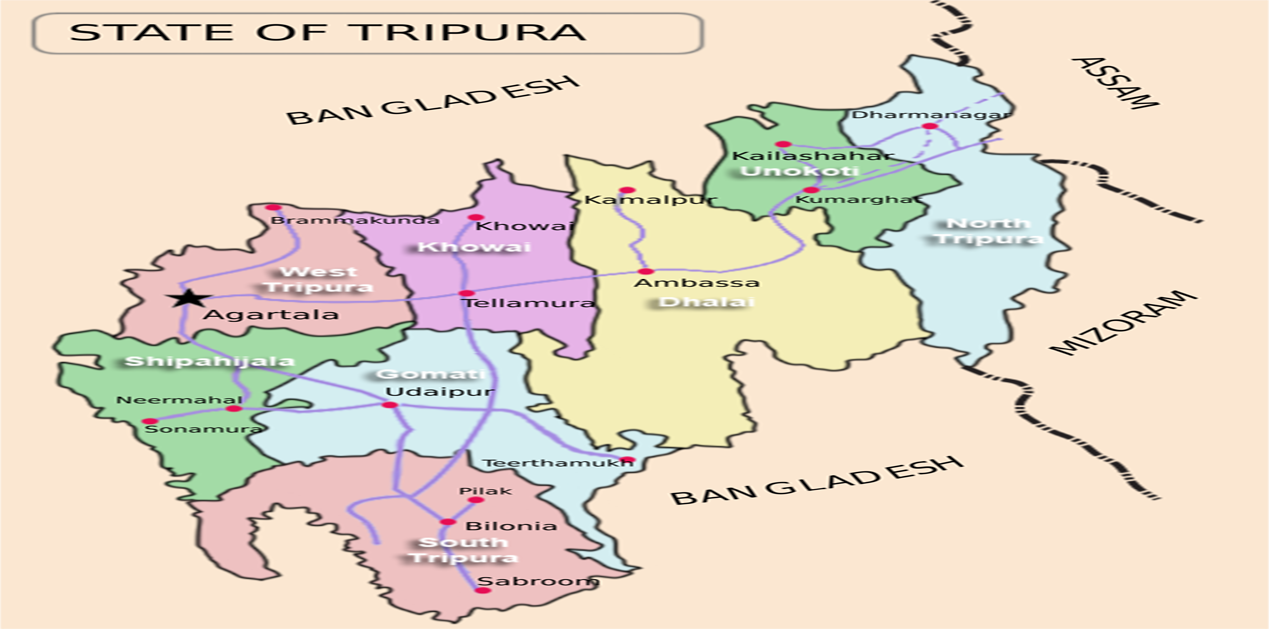



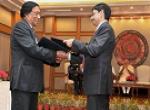
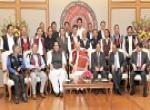
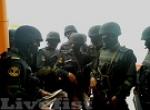
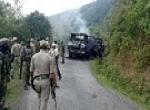

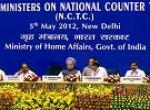
Post new comment